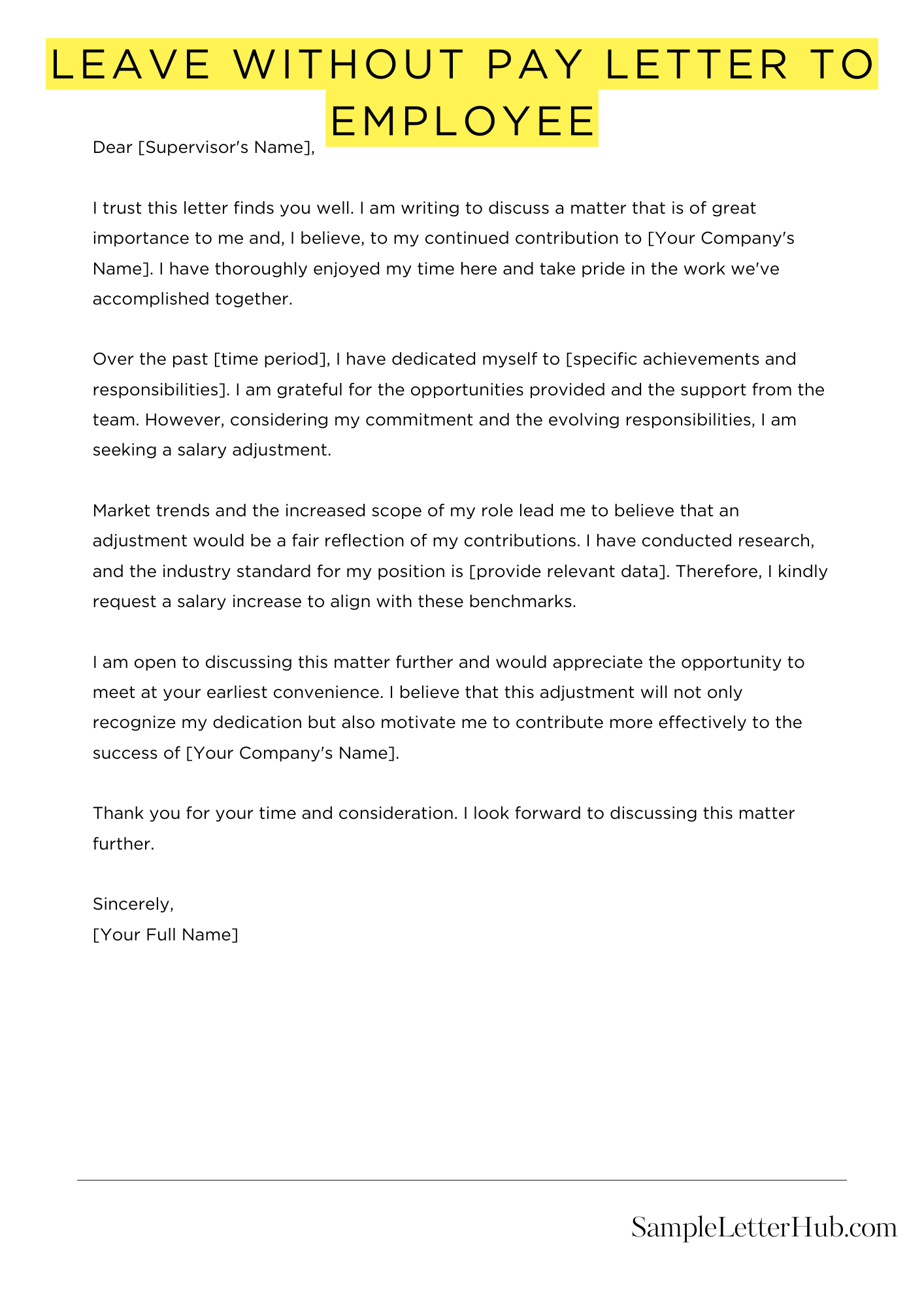A Leave Without Pay Letter To Employee is a formal document that is used to communicate an employee’s request for a leave of absence without pay. This type of letter is typically used when an employee needs to take time off for personal reasons, such as family emergencies, medical appointments, or educational pursuits.
In this article, we will provide you with several templates, examples, and samples of Leave Without Pay Letter To Employee. These templates and examples will help you to write a clear and concise letter that will effectively communicate your request for a leave of absence.
Leave Without Pay Letter to Employee
Dear [Employee Name],
This letter is to confirm your request for a leave of absence without pay from [Start Date] to [End Date]. Your request has been approved.
During your leave, your health insurance and other benefits will be suspended. You will be responsible for paying any premiums or fees that are due during your absence.
You will be expected to return to work on [Return Date]. If you are unable to return to work on that date, please contact your supervisor as soon as possible.
We wish you all the best during your leave.
Sincerely,
[Your Name]

How to Write Leave Without Pay Letter To Employee
A leave without pay (LWOP) letter is a formal request from an employee to take a temporary leave of absence from their job without receiving any pay. LWOP letters are typically used for personal reasons, such as family emergencies, medical leave, or educational pursuits.
1. Start with a Professional Salutation
Begin your letter with a professional salutation, such as “Dear [Manager’s Name].”
2. State Your Request Clearly
In the first paragraph, clearly state your request for a leave of absence. Include the start and end dates of your requested leave.
3. Provide a Reason (Optional)
While it is not always necessary to provide a reason for your leave, it can be helpful to do so. This will help your manager understand your situation and make a decision.
4. Explain How Your Absence Will Be Covered
If possible, explain how your absence will be covered during your leave. This may include delegating your responsibilities to a colleague or making arrangements for a temporary replacement.
5. Express Your Appreciation
Take a moment to express your appreciation for your manager’s consideration. Let them know that you understand the inconvenience your absence may cause and that you are committed to returning to work as soon as possible.
6. Close with a Formal Closing
End your letter with a formal closing, such as “Sincerely,” or “Respectfully.”
7. Proofread Carefully
Before submitting your letter, proofread it carefully for any errors in grammar, spelling, or punctuation.
FAQs about Leave Without Pay Letter To Employee
What is a Leave Without Pay (LWOP) Letter?
A Leave Without Pay (LWOP) Letter is a formal document issued by an employer to an employee who is requesting a period of unpaid leave from their job.
What should be included in a LWOP Letter?
A LWOP Letter should include the employee’s name, position, the start and end dates of the leave, the reason for the leave, and any other relevant information, such as whether the employee will continue to receive benefits during their leave.
How do I request a Leave Without Pay?
To request a Leave Without Pay, you should submit a written letter to your employer outlining the details of your request, including the start and end dates of the leave, the reason for the leave, and any other relevant information.
What are the benefits of taking a Leave Without Pay?
Taking a Leave Without Pay can provide employees with the opportunity to take time off for personal reasons, such as family emergencies, medical leave, or educational pursuits, without losing their job.
What are the potential drawbacks of taking a Leave Without Pay?
Taking a Leave Without Pay can result in a loss of income, and employees may also lose out on benefits such as health insurance and retirement contributions during their leave.

